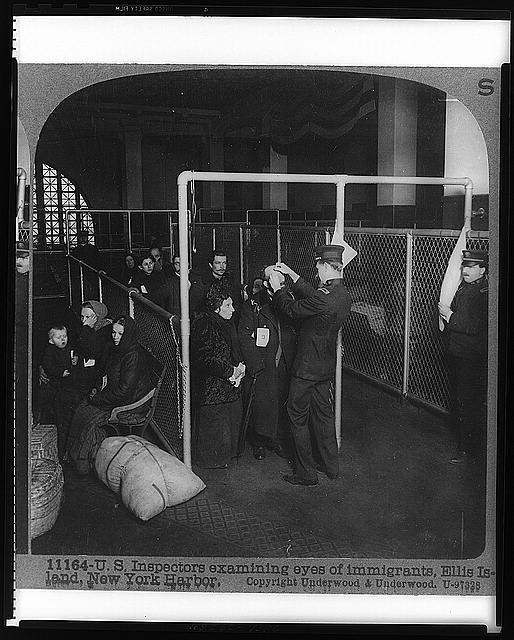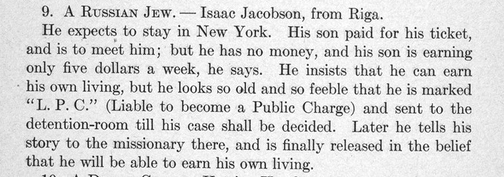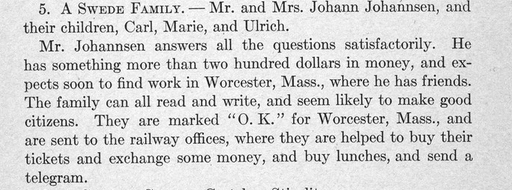
Accessed: Library of Congress Prints and Photographs Division Washington, D.C. 20540 USA
Target Students: 9th through 12th grade (Questions can be revised to reflect grade level and content studied)
Historic Skills: Sourcing and Corroboration
Primary Source: This is an excerpt from the Poem “The New Colossus” by Emma Lazarus, 1883. An inscription of the poem was later added to the Statue of Liberty at Liberty Island in 1903.

“Give me your tired, your poor,
Your huddled masses yearning to breathe free,
The wretched refuse of your teeming shore.
Send these, the homeless, tempest-tost to me,
I lift my lamp beside the golden door!”
Accessed: Library of Congress
Questions Pertaining to Sourcing:
Sourcing Question: The excerpt from Emma Lazarus’ poem, “The New Colossus” is indicative of the millions of immigrants that emigrated through Ellis Island and is useful in understanding the experiences of and attitudes towards immigrants . Do you agree or disagree? Use evidence from the source to support your answer.
Guiding Questions: Who wrote this? What is the author’s perspective? When was it written? Where was it written? Why was it written? Is it reliable? Why? Why not?

The following are a few excerpts from a book called “ Our Immigrants at Ellis Island” by Mrs. Francis E. Clark, a member of the United Society of Christian Endeavour, 1912. The book was meant to educate young Americans on the hardships and experiences associated with immigration during the late 19th and early 20th century by using real immigrant examples.
Accessed: The Library of Congress
Primary Sources:
- T.D. : Temporarily Detained
- E: Excluded
- O.K. : All right
Questions Pertaining to Corroboration:
Question #1:Explain why a historian may or may not agree with the way in which Emma Lazarus’ poem, “The New Colossus” describes the experiences of and attitudes towards all immigrants who came through Ellis Island.
Question #2: Using the examples of immigrants from the book “Our Immigrants from Ellis Island” decide whether or not these sources can support Emma Lazarus’ take on immigration in “The New Colossus.” If the sources are not supportive, explain why not.
Description of the Lesson:
This mini-lesson allows students to source a primary document and then find supportive evidence from other primary documents to support or challenge the information being presented in the first primary source. Students are essentially being asked to compare and contrast the differences between a fictionalized account of immigration and actual accounts of immigration while remaining critical of the sources’ origins. The students will be able to interact with the primary sources and ask questions of the primary sources.
Reflection:
Creating a lesson comprised entirely of primary sources leaves the history geek inside of me very content. The SHEG model really allows students to interact with primary source material and engage with material that is often neglected in a more teacher-centered classroom. By giving students an opportunity to analyze the sources directly, they not only take responsibility for their own learning, but are able to make prior connections to what they may already know. A primary source is like a window into another time and another place. In order to understand these windows, it’s essential to learn how to think and analyze like a historian. By teaching students to practice essential historian skills like sourcing, corroboration, and context, one can ensure that the students see the whole picture. I’m very excited to be using primary source material in a way that gives students a chance to grapple with their own opinions and interpretations of history.




